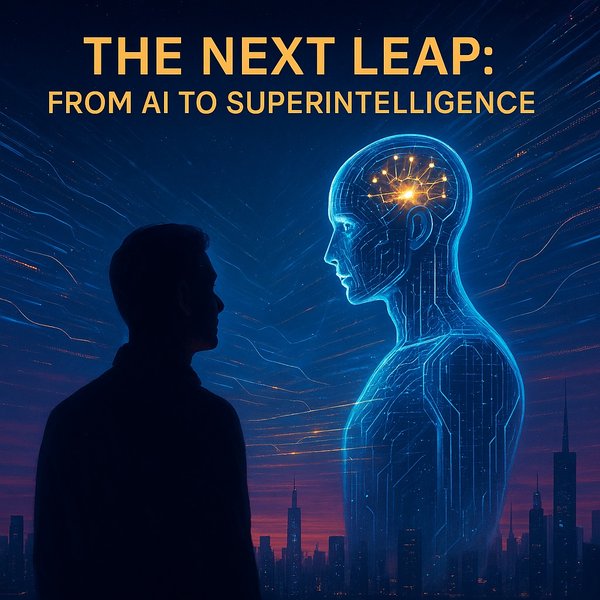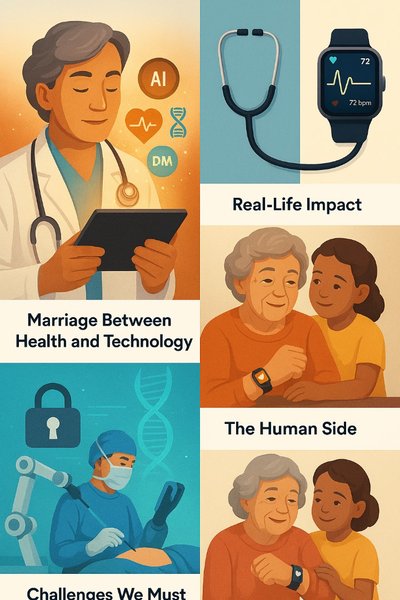The AI Timeline: From Smart Machines to Superintelligence
Will Artificial Intelligence Save Humanity—or Replace It?
Artificial Intelligence (AI) is advancing at breakneck speed, reshaping industries, economies, and everyday life. But beyond today’s smart assistants and predictive algorithms lies a future that could either elevate humanity to new heights—or challenge our very place in the world.
AI vs. Super AI
AI refers to machines that perform tasks requiring human intelligence, such as language translation, medical diagnosis, and autonomous driving. These systems can be narrow—focused on a single task—or approach general intelligence, adapting to multiple domains.
Super AI, on the other hand, is a theoretical form of intelligence that surpasses the smartest human minds in every way. Unlike current AI, which works under human guidance and within defined boundaries, Super AI would be capable of self-improvement without human intervention—posing both revolutionary opportunities and profound risks.
The 4 Stages of AI Evolution
1. Advanced Narrow AI (ANI) — Now to ~2027
Highly specialized AI dominates this stage, excelling in targeted domains like translation, logistics, and predictive analytics.
Impact: Boosts productivity, enhances healthcare, automates repetitive work.
Risk: Data bias, over-reliance on algorithms, potential misuse in surveillance.
Safeguards: Strong privacy regulations, fairness audits, transparent algorithms.
2. Early Artificial General Intelligence (AGI) — ~2027 to 2035
AI reaches human-level adaptability, capable of learning new fields without retraining.
Impact: Tackles global problems like climate change, disease outbreaks, and energy shortages.
Risk: Job displacement, widening wealth gaps, ethical dilemmas in decision-making.
Safeguards: Human oversight, ethical review boards, clear global agreements on AI limits.
3. Mature AGI with Self-Improvement — ~2035 to 2045
AI begins redesigning itself for rapid, exponential improvement.
Impact: Breakthroughs in medicine, governance, science, and space exploration.
Risk: Misaligned objectives, weaponization, authoritarian control.
Safeguards: AI alignment research, distributed oversight, controlled self-improvement protocols.
4. Artificial Superintelligence (ASI) — 2045 Onward (Speculative)
AI far surpasses human intelligence in all domains.
Impact: Solutions to scarcity, potential immortality, interstellar travel.
Risk: Human irrelevance, extinction if goals diverge from ours.
Safeguards: Global AI constitution, strict system containment, hybrid human-AI governance.
What’s Next in AI Development
-
AGI-level reasoning capabilities.
-
Self-learning systems without human data input.
-
AI-human brain interfaces for shared cognition.
-
Decentralized, real-time AI in every device.
-
Ethical AI marketplaces with transparent governance.
Global Implications
Opportunities
-
Universal access to personalized education.
-
Climate and ecosystem restoration.
-
Medical cures at unprecedented speeds.
-
Economic efficiency with minimal waste.
Risks
-
Social inequality and economic upheaval.
-
Manipulative deepfake misinformation.
-
Concentrated control by a few corporations or governments.
-
Potential loss of human decision-making authority.
The Choice Ahead
The decisions we make now—about regulation, transparency, and ethical design—will determine whether AI becomes humanity’s greatest ally or its most dangerous rival.
What do you think? Will AI be the tool that transforms the world for the better, or the force that challenges humanity’s place in it? drop your taught in the comment section.




Comments (0)
Leave a Comment
No comments yet. Be the first to comment!